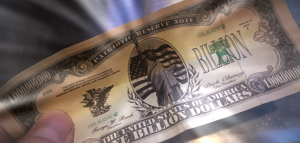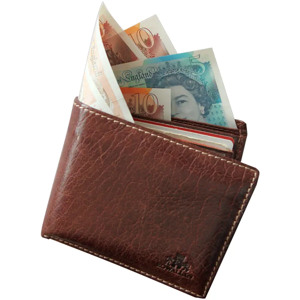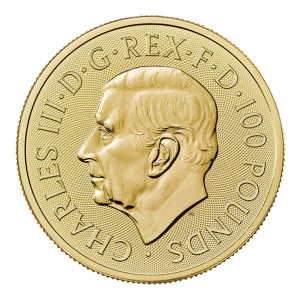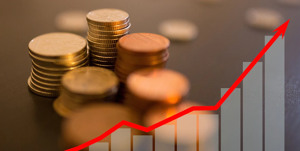Tavex uses cookies to ensure website functionality and improve your user experience. Collecting data from cookies helps us provide the best experience for you, keeps your account secure and allows us to personalise advert content. You can find out more in our cookie policy.
Please select what cookies you allow us to use
Cookies are small files of letters and digits downloaded and saved on your computer or another device (for instance, a mobile phone, a tablet) and saved in your browser while you visit a website. They can be used to track the pages you visit on the website, save the information you enter or remember your preferences such as language settings as long as you’re browsing the website.
| Cookie name | Cookie description | Cookie duration |
|---|---|---|
| tavex_cookie_consent | Stores cookie consent options selected | 60 weeks |
| tavex_customer | Tavex customer ID | 30 days |
| wp-wpml_current_language | Stores selected language | 1 day |
| AWSALB | AWS ALB sticky session cookie | 6 days |
| AWSALBCORS | AWS ALB sticky session cookie | 6 days |
| NO_CACHE | Used to disable page caching | 1 day |
| PHPSESSID | Identifier for PHP session | Session |
| latest_news | Helps to keep notifications relevant by storing the latest news shown | 29 days |
| latest_news_flash | Helps to keep notifications relevant by storing the latest news shown | 29 days |
| tavex_recently_viewed_products | List of recently viewed products | 1 day |
| tavex_compare_amount | Number of items in product comparison view | 1 day |
| Cookie name | Cookie description | Cookie duration |
|---|---|---|
| chart-widget-tab-*-*-* | Remembers last chart options (i.e currency, time period, etc) | 29 days |
| archive_layout | Stores selected product layout on category pages | 1 day |
| Cookie name | Cookie description | Cookie duration |
|---|---|---|
| cartstack.com-* | Used for tracking abandoned shopping carts | 1 year |
| _omappvp | Used by OptinMonster for determining new vs. returning visitors. Expires in 11 years | 11 years |
| _omappvs | Used by OptinMonster for determining when a new visitor becomes a returning visitor | Session |
| om* | Used by OptinMonster to track interactions with campaigns | Persistent |
| Cookie name | Cookie description | Cookie duration |
|---|---|---|
| _ga | Used to distinguish users | 2 years |
| _gid | Used to distinguish users | 24 hours |
| _ga_* | Used to persist session state | 2 years |
| _gac_* | Contains campaign related information | 90 days |
| _gat_gtag_* | Used to throttle request rate | 1 minute |
| _fbc | Facebook advertisement cookie | 2 years |
| _fbp | Facebook cookie for distinguishing unique users | 2 years |

At one time or another, we’ve all been told that money is just paper. But have you ever wondered if that’s true? What gives money its value?
Almost all currencies in the world are fiat currencies. In this article, we will explain what fiat currency is, how it came into being, and how it works.
What is Fiat Currency?

Fiat currency is a currency that has no intrinsic value and is established as legal tender through government regulation.
It is not backed by any physical commodity like gold or silver. Instead, the currency is backed by the trust and creditworthiness of the government that issues it.
Essentially, fiat money is money because society has accepted it as such through government decree
Most modern paper currencies are fiat currencies, including the US dollar, the euro, and other major world currencies.
The value of fiat currency, like most things in economics, is determined by supply and demand. It was introduced as an alternative to commodity money and fiat money. Commodity money is created from precious metals such as gold and silver, while fiat money represents a right to a commodity that can be redeemed.
Fiat currency, as we will discuss later, is susceptible to inflation and hyperinflation.
History of Fiat Money

For most of history, gold, silver, and bronze have been used as money
They meet all the logical standards for being used as money. They have intrinsic value, they are rare, and they have a limited supply, and as metals they are resistant to decay and degradation. These metals are also universal and have value wherever they are carried, because gold is gold no matter where you are.
These are just some of the reasons why precious metals have been the preferred form of money for thousands of years. However, over time, governments and other institutions have begun to experiment with fiat currencies, primarily in times of crisis, as a way to continue spending and keep money in circulation without having to increase their metal reserves.
The meaning of “fiat” in Latin roughly translates to “to be”
This is a brief explanation of the emergence of fiat currency imposed by government decree .
Some Country Examples:
1) China
Fiat currency originated in China in the 10th century, when there was a high demand for metallic currency that exceeded the supply of precious metals. People were accustomed to using credit notes and readily accepted pieces of paper or paper receipts.
The shortage of coins forced people to switch from coins to banknotes. During the Song Dynasty (960–1276), the Sichuan region experienced a boom in trade, which led to a shortage of copper coins. Merchants began issuing private notes backed by a coin reserve, and this is considered the first legal tender.
Paper money became the sole legal tender during the Yuan Dynasty (1276–1367), and the issuance of banknotes was assigned to the Ministry of Finance during the Ming Dynasty (1368–1644).
2) Europe and the West

Around 1150, the Knights Templar issued pilgrim notes. Pilgrims deposited valuables with a local Templar commandery before setting out for the Holy Land and received a document stating the value of their deposit.
They used this document upon arrival in the Holy Land to obtain funds from the treasury of the same value. This was a limited practice and did not reflect the wider economy, which was still entirely based on gold and silver currency.
The West began using paper money in the 18th century. The American colonies, France, and the Continental Congress began issuing notes of credit, which were used for payments. Provincial governments issued notes that holders used to pay taxes. Issuing too many notes of credit was controversial because of the dangers of inflation.
In some regions, such as New England and the Carolinas, notes depreciated significantly and commodity prices rose as notes lost value.
During times of war, countries resorted to fiat currencies to preserve the value of precious metals such as gold and silver. For example, the United States federal government resorted to a form of fiat currency called “Greenbacks” during the American Civil War . During that war, the government stopped converting its paper money into gold or silver.
The Transition from Gold to Fiat Currencies

The 20th century was the crucial period during which most major economies transitioned from gold-backed currencies to fiat currencies.
In times of crisis, governments temporarily suspend the gold standard and begin issuing fiat money with the promise that after the crisis is over, they will be able to return to the gold standard.
But, as Nobel laureate in economics Milton Friedman says:
“Nothing is more permanent than a temporary government program.”
The crises of the 20th century, such as the world wars and the Cold War, meant that most countries devastated by these conflicts could no longer continue to finance the war effort or the aftermath of war through their depleted treasuries. For this reason, they switched to fiat currencies and began printing money as a means of financing the war and reconstruction.
This led to several hyperinflationary episodes, examples being Weimar Germany (1922), Austria (1922), Soviet Union (1917), Hungary (1946), Yugoslavia (1992-1994).
More on this topic: What is hyperinflation?
The list goes on and on. Most fiat currencies have experienced high inflation, and many have had episodes of hyperinflation. Fiat currency is inextricably linked to inflation.
Richard Nixon in 1971 took the most radical step in the history of monetary policy by ending the gold standard of the US Dollar
Previously, since the Bretton Woods Agreement (1944), the US dollar had been backed by gold and used as the world’s reserve currency The consequences of this decision were a decade of stagflation (stagnation of economic growth combined with high inflation) in the Western world in the 1970s.
Fiat Money and Inflation

Fiat currency, which is based solely on trust in the government, combined with the fact that the money supply is controlled by the government through central banks, makes inflation inevitable – a topic we have covered in detail.
More on this topic: The real meaning of inflation and deflation?
Governments increase the money supply through artificially low interest rates and money printing . This increase in the money supply is intended to stimulate economic activity, but instead leads to long-term inflation.
The 2007 mortgage crisis and subsequent financial collapse shook the belief that central banks could necessarily prevent depressions or serious recessions by regulating the money supply.
Gold-backed currency is typically more stable than fiat money due to the limited supply of gold.
Also, with fiat money there is more opportunity to create economic bubbles due to its unlimited supply.

















